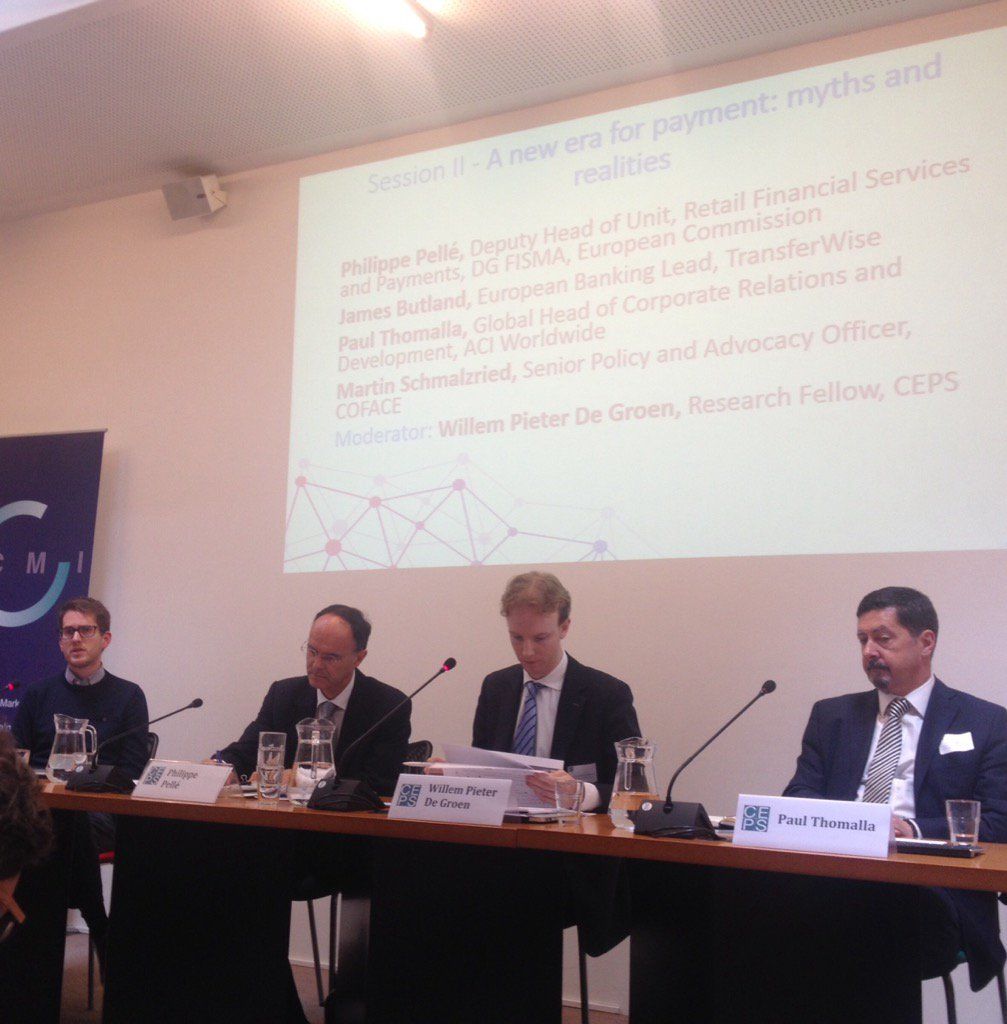From The Atlantic: the 6 Most Illuminating Quotes from the Fed's Pre-Crisis Meetings. A story of pride, prescience, and mild panic among the economy's keepers at the eve of this generation's worst recession. It was the end of the world as we knew it, and the Fed was feeling fine. Okay, that's not really fair. The transcript of the Federal Reserve's 2007 meetings, months before the economy entered its worst recession since the Great Depression, reveal an institution far from oblivious, with a few notable exceptions. They just didn't quite understand the labyrinthine web of financial interconnections until it was too late.
Back in 2007, the credit crunch that became the Great Recession started when financial institutions realized it might not have been a good idea to loan money to people who couldn't pay you back. But with the economy roaring to new heights, the Fed wasn't in crisis mode -- yet. Panic in the financial markets certainly wasn't good news, but the Fed had managed to make it through similar panics in 1987, when the stock market fell almost a quarter in one day, and in 1998, when hedge fund Long-Term Capital Management nearly brought down the financial system, without the real economy suffering any harm. This time didn't need to be different. And, to be fair, the Fed was well aware of the risks piling up in the financial system as the clock ticked down to Lehman. It didn't even really make any big mistakes in 2007; those came later. So while it's easy to mock the Fed for saying Bear Stearns and Countrywide didn't have too much trouble getting liquidity in August 2007 ... but it was true at the time! They only ran into problems, the kind that drove them into bankruptcy and/or mergers, later.Below are the six most revealing passages from the Fed's pre-crisis meetings, with a key sentence of each quote underlined. Beyond the inflation hawks who managed to see price increases under every rock, they were mostly right in their analyses. They just weren't right enough. Or quickly enough.
Ben Bernanke, August 10, 2007:
Our goal is to provide liquidity not to support asset prices per se in any way. My understanding of the market's problem is that price discovery has been inhibited by the illiquidity of the subprime-related assets that are not trading, and nobody knows what they're worth, and so there's a general freeze-up. The market is not operating in a normal way. The idea of providing liquidity is essentially to give the market some ability to do the appropriate repricing it needs to do and to begin to operate more normally. So it's a question of market functioning, not a question of bailing anybody out.
This is what a central banker says when things start to hit the fan. The day prior, French bank BNP Paribas had sent the financial world into a frenzy when it announced it wouldn't let investors cash out of two of its subprime funds, because the bank had no idea what they were worth. Nobody would buy, and when that happens, the "price" is pretty much zero. But as Bob Peston of the BBC pointed out at the time, the scariest bit was that BNP Paribas itself didn't want to buy these bonds on the cheap. The bank wasn't sure they weren't totally worthless, too. And if banks (and shadow banks like hedge funds or special investment vehicles) were sitting on top of piles of genuinely worthless bonds, who would want to lend them? Answer: nobody, at least not without top-notch collateral. Hello, credit crunch.
Ben Bernanke, August 16, 2007:
So I wouldn't say that a rate cut is completely off the table, but my own feeling is that we should try to resist a rate cut until it is really very clear from economic data and other information that it is needed. I'd really prefer to avoid giving any impression of a bailout or a put, if we can. Therefore, what I'm going to suggest today is to offer a statement updating our views of the economy that will give some signal about where we think things are going but to stop short today of changing rates.
A week later, things weren't any better. Financial institutions still didn't want to lend to each other except against the best collateral, and markets still didn't exist for subprime securities. Bernanke's dilemma was whether to 1) just expand emergency lending to the banks, or 2) cut interest rates too. But with the real economy humming despite the financial turmoil, Bernanke worried the latter would look too much like a bailout (or a "put" option) for Wall Street.
Bill Dudley, September 18, 2007:
At the same time, this balance sheet pressure and worries about counterparty risk have led to a significant rise in term borrowing rates. Banks that are sellers of funds have shifted to the overnight market to preserve their liquidity, and this shift has starved the term market of funds, pushing those rates higher .... Moreover, the increased reliance by banks on overnight funding increases rollover risk and may limit the willingness of banks to expand their balance sheets to accommodate the deleveraging of the nonbank financial sector.
This is one of the driest descriptions of financial armageddon you'll ever read. Let's translate it into English. Banks knew they were all sitting on top of toxic waste, but nobody knew who was sitting on the most of it -- so they wouldn't lend to each other, except at punitively high rates, for anything longer than a day. But relying on such overnight funding made the banks vulnerable to de facto bank runs, and that made vulnerability made them less likely to keep lending even as shadow banks cut back on lending. In other words, a credit crunch. And less credit just when borrowers most needed it meant more people would eventually go bust ... hurting mortgage bonds even more, and making banks pull back further. Loops don't get much more vicious.
Janet Yellen, December 11, 2007:
The possibilities of a credit crunch developing and of the economy slipping into a recession seem all too real .... I am particularly concerned that we may now be seeing the first signs of spillovers from the housing and financial sectors to the broader economy .... Although I don't foresee conditions in the banking sector getting as bleak as during the credit crunch of the early 1990s, the parallels to those events are striking. Back then, we saw a large number of bank failures in the contraction of the savings and loan sector. In the current situation, most banks are still in pretty good shape. Instead, it is the shadow banking sector-- that is, the set of markets in which a variety of securitized assets are financed by the issuance of commercial paper--that is where the failures have occurred. This sector is all but shut for new business. But bank capital is also an issue. Until the securitization of nonconforming mortgage lending reemerges, financing will depend on the willingness and ability of banks, thrifts, and the GSEs to step in to fill the breach.
The Great Recession was just about to officially begin (although NBER wouldn't announce that until much later), and more members of the Fed were contemplating the Rube Goldberg machine of doom subprime had set off. As Yellen pointed out here, the shadow banking system was already in hibernation at this point, although it wasn't clear whether regular banks would be able to step in the breach and keep things moving. (Spoiler alert: They weren't).
Frederic Mishkin, December 11, 2007:
In particular, there are two scenarios that they go into separately--the housing correction scenario and the credit crunch scenario. I think that there's a very strong possibility those would come together because, if housing prices go down more, that creates a much more serious problem in terms of valuation risk, and a serious problem in valuation risk will mean a further credit market disruption, which then can lead to more macroeconomic risk because it leads to this downward spiral. The real economy gets worse.
These are about the three most prescient sentences you'll find in the Fed transcripts. Miskin was concerned that subprime wasn't, as Bernanke had previously put it, contained, and that a further fall in housing would mean further damage to bank and shadow bank balance sheets, which would make them even less likely to lend. The ultimate danger, as Mishkin pointed out, was that this credit crunch would migrate from the financial to the real economy; that not just banks, but households too, wouldn't be able to borrow. The pyramid of debt that existed in 2007 was like a shark -- it had to keep moving to live. If households spent less because they couldn't borrow more, the economy would slow down, and more people would default on their debts. In other words, exactly what did happen would happen. Of course, it still wasn't clear how precarious the financial sector was beyond the shadow banks. Again, from Mishkin.
You don't like to use the R word, but the probability of recession is, I think, nearing 50 percent, and that really worries me very much. I also think that there's even a possibility that a recession could be reasonably severe, though not a disaster. Luckily all of this has happened with an economy that was pretty strong and with banks having good balance sheets; otherwise it could really be a potential disaster.
Indeed.
Richard Fisher, December 11, 2007:
I'd like to address the inflation situation more thoroughly, Mr. Chairman. The CEO of Wal-Mart USA said that, for the first time in his career at that firm, they have approved a plan in which purchase costs will increase 3 percent in '08. He hadn't seen that before in his experience and said, "I'm totally used to deflation. Deflation is finished." In terms of the suppliers to Wal-Mart, this was verified. I think on food prices we have to be extremely careful. Frito-Lay is seeking a 51⁄2 percent price increase for next year. Wal-Mart has acquiesced.
No, I didn't make this one up. And yes, just as the biggest deflationary spiral in 80 years was about to hit the economy, Fisher was worried about inflation. And he was worried about inflation, because ... Frito-Lay was thinking about increasing prices 5.5 percent the following year. This is not a joke. Well, it is a joke, but, again, not one that I made up.
|











